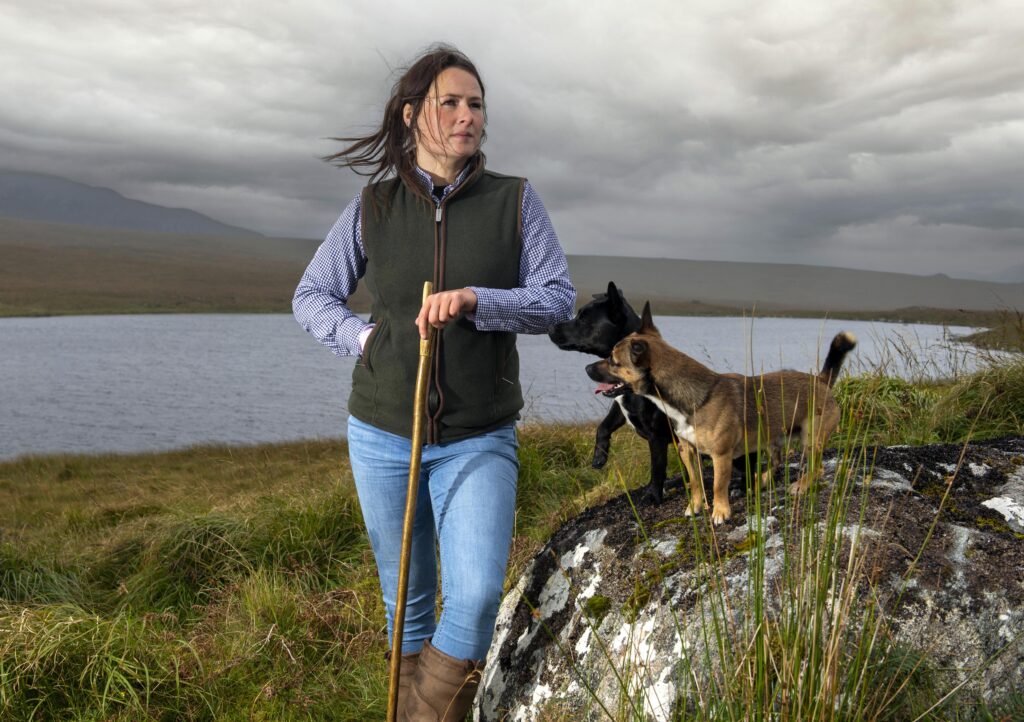
Firefighting with Scotland’s first female gamekeeping lecturer
Sophie Clark, Scotland’s first female gamekeeping lecturer, shares the story of why she’s also a retained firefighter.
I GREW up in the small harbour village of Kinlochbervie in the north west of Sutherland. It was and still is an idyllic place to live and the community is very close-knit. I’ve always known I wouldn’t want a job that involved sitting behind a desk all day. I love the outdoors and I always want to feel that I’m making a difference. I enrolled on the gamekeeping and wildlife management course at the University of the Highlands & Islands (UHI) North Highland in Thurso and from that moment I never looked back.
From the word go I loved every aspect of the course – I was offered the chance to assist with walked up grouse shooting over dogs on estates in the north of Scotland, which was an amazing introduction to land management.
My first work placement was at Reay Forest Estate where I was trained in deer management, worked with hill ponies and as a ghillie on the glorious River Laxford. There is so much more to being a gamekeeper or a ghillie than most people realise.
I became a lecturer to help encourage more young people and women to pursue a rural career – whether as a gamekeeper, a ghillie or a land manager, there are huge opportunities to protect the natural environment and encourage biodiversity while also remaining in your home village, and supporting your community.
The role of a gamekeeper has changed immeasurably in recent years with far greater emphasis on conservation, and in my opinion, this opens the door to more women coming through.
There’s nothing more heartening than to see lapwing nesting on the land you manage or to hear the beautiful call of the curlew when up on the hills. That’s thanks to gamekeepers providing a rich habitat for wildlife to thrive.
All too often those who come to Scotland for country sports are pigeonholed as toffs wearing tweed but that is an outdated view based on the age old myths about shooting.
It’s not a question of looking for a huge number of birds to shoot above everything, and it’s also important to note that grouse shooting only takes place when there’s a sustainable surplus. Gamekeepers and those who come here to shoot are passionate about our countryside and understand the need to retain moorland so that generations to come can enjoy the outstanding purple heather moors that we see today.
The number of women on the gamekeeping and wildlife management course at UHI North Highland is slowly growing year on year. We are developing new areas of the curriculum, including woodland impact assessments and delivering rural skills to local schools in the north west of Scotland. If we don’t work hard to inspire the younger generation they will all feel they have to move to Glasgow or Edinburgh to get a job and the glens and hills will suffer even more than they do today.
I became a retained firefighter because I wanted to help my community and there is always a need for firefighters in the Highland region – it’s another job where you can make a difference and help the local community. This year there has been an extraordinary number of wildfires breaking out and gamekeepers are often first on the scene of a wildfire, working in partnership with the Fire & Rescue Service.
Wildfires rarely occur on grouse moors as the gamekeepers manage the moors with a cycle of controlled heather burning that reduces the fuel load and which prevents the destruction and devastation to wildlife and their habitats that wildfires cause.
There are so many aspects to rural conservation – I’m in talks with starting a local deerstalking group for women and I help out with sea bird surveys. I hope many more women will feel confident about working in land management or gamekeeping. If I can do it, anyone can.
Read more stories on Scottish Field’s news pages.
Plus, don’t miss Guy Grieve’s column the January issue of Scottish Field magazine.

TAGS

